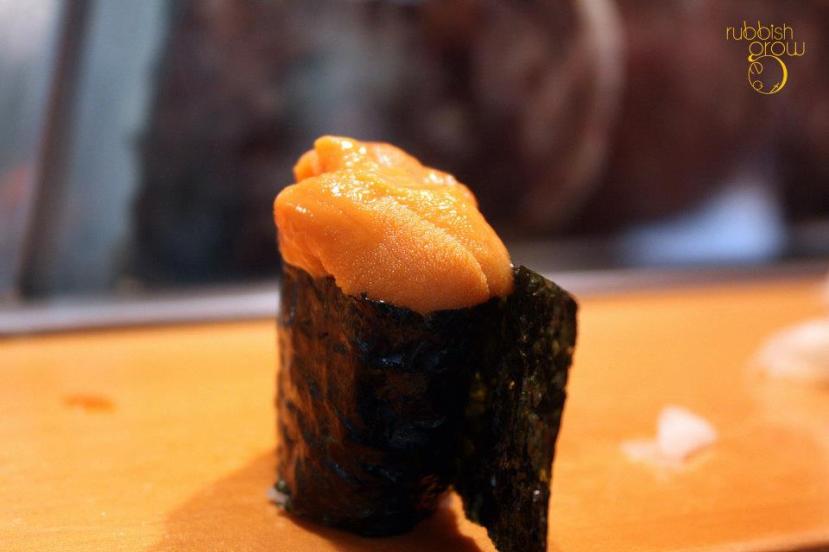The imminent relocation of Tsukiji Fish Market is supposed to occur in November in preparation for Olympics 2020, but once again it has been delayed. They have been postponing the move for years now; I think the Japanese are sentimental and are finding all kinds of excuses not to leave the site where they have been rooted since 1923.
In Tsukiji market, there are two famed sushi-ya, side by side, that have long queues even before they open at 5am: Sushi Dai and Sushi Daiwa. They are a pilgrimage for all tourists. You haven’t been to Tokyo if you haven’t queued at one of the two sushi houses.
Disclaimer: On my recent trip, I had Daiwa, but I tried Sushi Dai previously, 4 years ago. I hope my assessment is still somewhat accurate since it is well known that Japanese always maintain their standards.
| Sushi Dai 大 | Sushi Daiwa 大和 |
|---|---|
| Address | |
| 6-27-1 Tsukiji, Bldg 6, Chuo-ku; +81-3-3541 3738 | Bldg 6, Tsukiji 5-2-1, Chuo-ku; +81-3-3547-6807 |
| Opening Hours | |
| 5am-1pm | M-Sat 5.30am-1.30pm |
| Directions | |
| Take Oedo line to station Tsukijishijo, and exit A1. Look for the Block 6 building. Try not to Google Map it. Google map isn’t accurate for me. | |
| Price | |
| ¥2,500 for 7 nigiri+maki ¥4,000 omakase (10+1 nigiri+maki) |
¥3,500yen for 7 nigiri + maki You can also ask for omakase. |
| Waiting Time | |
| We were at Dai at 4.40am, before they were opened, and there was already a queue. We waited for almost 2 hours. If you take the first train and reach there at about 6am, you may have to queue for 3-4 hours. (Read on to see why the queue takes so long.) | We took an early train and reached Daiwa at about 6.30am or so. We were in the third row of the queue but the queue moves very quickly. We waited for only about 40 minutes. This is because of the way the sushi is served and the size of the restaurant. (Read on.) |
| Decor | |
| One of the reasons why Sushi Dai requires a queue of 3-4 hours is that the restaurant is so tiny. It’s a sushi bar with about 9-10 seats, nothing extraneous. It’s cramp but homely. | One reason why Sushi Daiwa’s queue moves faster is because they have 2 outlets side-by-side, so there are double the seats (about 20), although it is still cramp. I also thought Daiwa isn’t as clean as Dai. |
| Service | |
| Dai serves sushi one-by-one as it should be done. Sushi is best when eaten directly from the sushi chef. The chef who was serving us was friendly and tried to make small talk. | Another reason why Daiwa is so much faster: they dump all the sushi at you at a go. I really didn’t like it. But the oldest sushi chef served us (I like it because it means he’s most experienced). He can’t speak much English but he’s very humorous with his body language. |
| Food | |
| Sushi at Dai is much better. The vinegared shari is warm and pillowy, and the raw seafood is kept moist. My eating companion said that he did not want to eat anything for the rest of the day because he didn’t want to ruin the memory of the taste in his mouth. | The otoro and chutoro make us moan like in orgasm. The ebi sushi is good too. But the wasabi can be heavy-handed and choking. The sushi isn’t as good as Dai, less flavorful, and slightly dry at times, but it is still excellent. |
| Conclusion | |
| If you are a true-blue, diehard foodie who hasn’t been physically abused to walk 23k steps the previous day by your travelling companion and whose feet do not burn with the pain of a thousand suns, and you are willing to queue for 3-4 hours, I highly recommend Sushi Dai. It serves unforgettable food at same price; the food conjures an image as if you’re running through a field of barley.
But if you don’t care to queue too long, want to wake up late, and just want the experience of eating sushi for breakfast at Tsukiji, then Daiwa is a good substitute too. |
|
Photos from Sushi Dai






Photos from Sushi Daiwa



Written by A. Nathanael Ho.
Categories: Tokyo

11 replies »